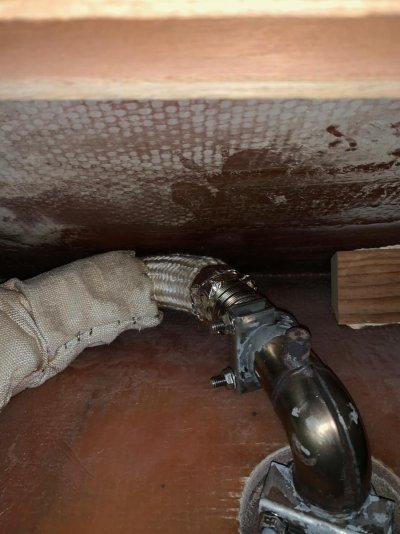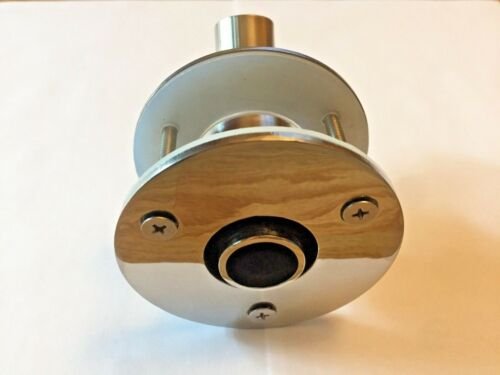tozz
Senior Member
- Joined
- Feb 13, 2017
- Messages
- 323
- Location
- USA
- Vessel Name
- Conundrum
- Vessel Make
- Nordlund 63' Pilothouse
Greetings-
Last week I had my Espar D8LC serviced and a new exhaust run to the external hull fitting. This included new inside sleeve and thick external insulation padding. After a few minutes of running I noticed a sweet smell from the area and some whispy smoke. The smoke has gone away but the installer tells me that i just need to run the heater to "cook" oils off and cure the new insulation. I was told about 2-4 hours of runtime.
I ran the heater normally (cycling on and off regularly) for a day or so but smell remained and when I used a FLIR to check temps I found that up at the gooseneck I'm reading over 250*F right as the gooseneck just touches the deck. I would like them to come back, reorient the exhaust to create an air gap and potential even install some insulation matting to the underside of my fiberglass decking to protect it. Finally, I do believe that to tighten the thu hull they did clock it clockwise a tiny bit which change the angle upward ever so slightly.
So questions...
1. Is 250*F too hot for fiberglass hull? I think so and some (all?) of the smell may be resin?
2. Has anyone had to cook off the smells from a new furnace installation? If so, how long did it take?
3. I was not expecting such high temps off the espar. Over 400*F right at the egress of the combustion chamber and over 250*F 6 ft away at the top of the gooseneck. Any further recommendations for a really hot exhaust for an Espar forced hot air diesel furnace?
Pictures to show before and after inside the closet against the hull.
Thanks in advance!
-tozz
Last week I had my Espar D8LC serviced and a new exhaust run to the external hull fitting. This included new inside sleeve and thick external insulation padding. After a few minutes of running I noticed a sweet smell from the area and some whispy smoke. The smoke has gone away but the installer tells me that i just need to run the heater to "cook" oils off and cure the new insulation. I was told about 2-4 hours of runtime.
I ran the heater normally (cycling on and off regularly) for a day or so but smell remained and when I used a FLIR to check temps I found that up at the gooseneck I'm reading over 250*F right as the gooseneck just touches the deck. I would like them to come back, reorient the exhaust to create an air gap and potential even install some insulation matting to the underside of my fiberglass decking to protect it. Finally, I do believe that to tighten the thu hull they did clock it clockwise a tiny bit which change the angle upward ever so slightly.
So questions...
1. Is 250*F too hot for fiberglass hull? I think so and some (all?) of the smell may be resin?
2. Has anyone had to cook off the smells from a new furnace installation? If so, how long did it take?
3. I was not expecting such high temps off the espar. Over 400*F right at the egress of the combustion chamber and over 250*F 6 ft away at the top of the gooseneck. Any further recommendations for a really hot exhaust for an Espar forced hot air diesel furnace?
Pictures to show before and after inside the closet against the hull.
Thanks in advance!
-tozz





